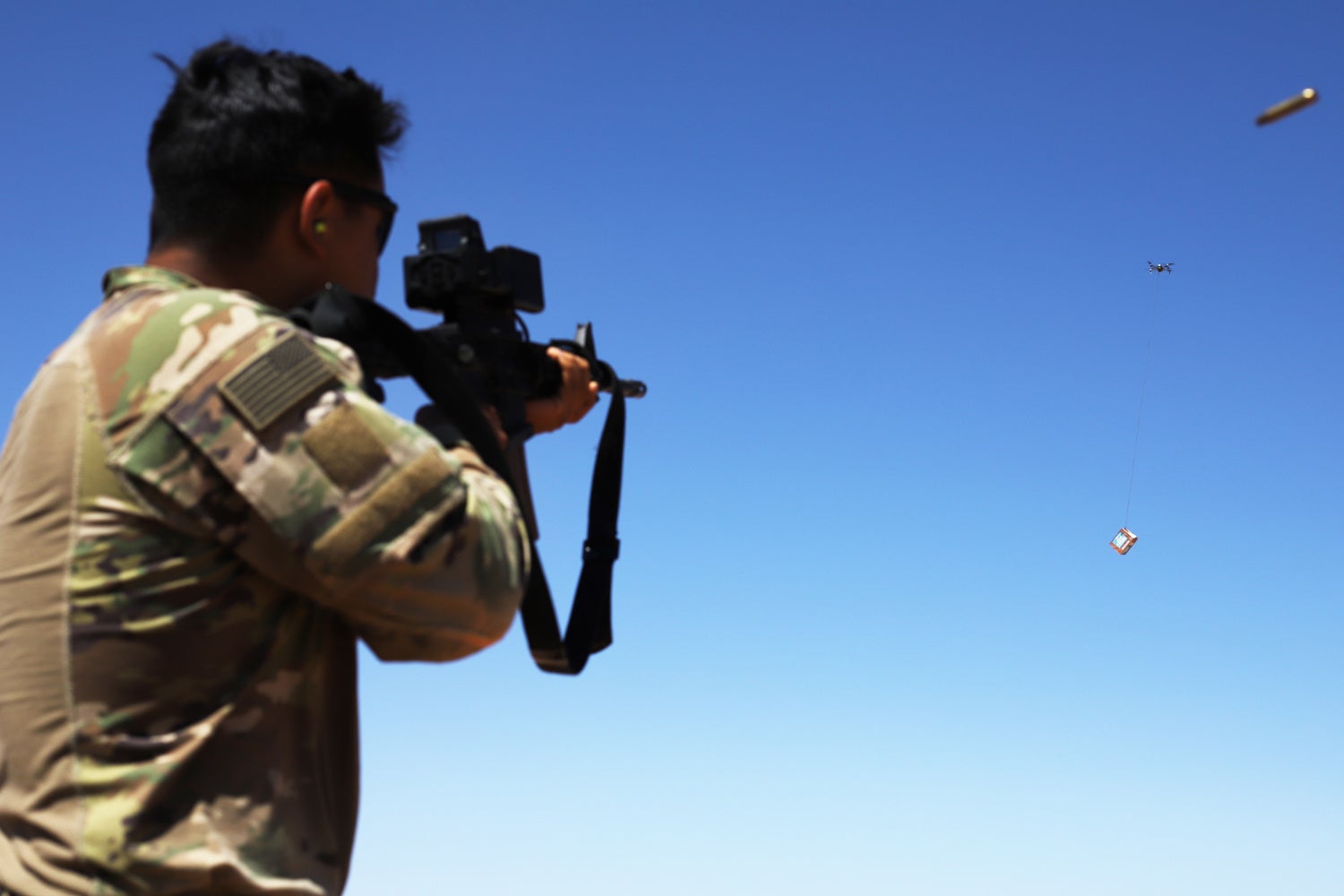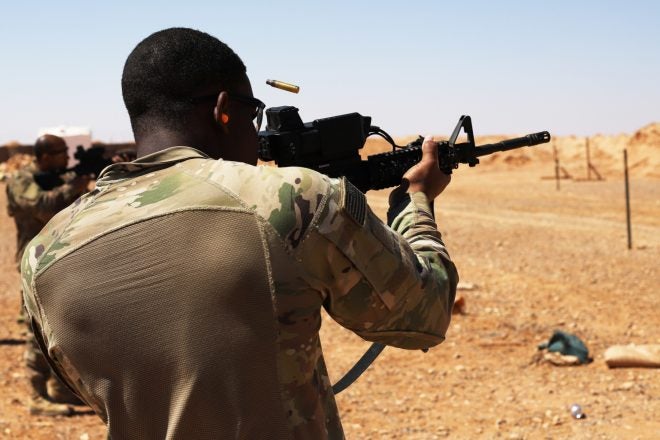The US Army has announced the selection of a raft of anti-drone systems to combat the threat of small drones which are proliferating on battlefields around the world. The new Counter-Small Unmanned Aircraft System (C-sUAS) capabilities range from fixed systems to optics for small arms.
Small drones pose a real and increasing danger to ground forces, giving not just asymmetric threats but also peer/near-peer adversaries a low-cost, high-reward method of both gathering intelligence and mounting attacks which are difficult to counter. In a number of conflicts, small commercial drones have been adapted to gather intelligence, deliver ordnance or conduct aerial ‘suicide’ attacks. These small drones are surprisingly difficult to hit with small arms, especially in close urban environments, so new methods of defeating them are needed.
The Department of Defense (DoD) has moved to counter the threat by establishing the Joint C-sUAS Office or ‘JCO’ which will lead efforts to develop and procure system which can effectively counter small battlefield drones. While the C-sUAS office is Army-led, it is a joint office and many of the systems selected for interim use will be sponsored by other service branches who have specific needs and also seek to minimise the threat from small battlefield drones.

U.S. Army Sgt. Gage Stancell, right, looks through binoculars as Sgt. Gentry Squier describes where he saw a drone during an unmanned aerial system training exercise at Erbil Air Base in the Kurdistan Region of Iraq, April 24, 2020. Sgt. Squier is holding a Dronebuster from Flex Force. (Spc. Angel Ruszkiewicz)
The Army confirmed that “Most of the assessed systems were initially purchased to address urgent and emerging operational needs of deployed forces. This assessment determined the selection of current systems for future investment based on criteria such as effectiveness, usability, sustainment and integration.”
The new Counter-Small Unmanned Aircraft Systems span four types and include:
1) Fixed/Semi-Fixed Systems:
a. FS-LIDS (Fixed Site-Low, Slow, Small Unmanned Aircraft System Integrated Defeat System) – sponsored by the US Army
b. NINJA (Negation of Improvised Non-State Joint Aerial-Threats) – sponsored by the USAF
c. CORIAN (Counter-Remote Control Model Aircraft Integrated Air Defense Network) – sponsored by the US Navy
2) Mounted/Mobile System:
L-MADIS (Light-Mobile Air Defense Integrated System) – sponsored by the USMC
3) Dismounted/Handheld Systems:
a. Bal Chatri – to be sponsored by SOCOM
b. Drone Buster
4) Command and Control:
FAAD-C2 (Forward Area Air Defense Command and Control) and interoperable systems, which include ADSI (Air Defense System Integrator) and will include MEDUSA C2 (Multi-Environmental Domain Unmanned Systems Application Command and Control) once it becomes interoperable with FAAD-C2.

A Soldier fires at a box carried by a drone during a Smart Shooter sighting device familiarization range near At-Tanf Garrison, Syria, May 30, 2020. (DoD/Staff Sgt. William Howard)
The DoD says they are “continuing to work with industry to bring these systems to full maturity or replacement with follow-on enduring solutions.” With anti-drone technology developing almost as rapidly as drone technology itself, the DoD and US Army are continuing to monitor C-sUAS emerging technologies currently being developed.
Maj. Gen. Sean A. Gainey, the director of JCO, said that they are taking “an enterprise approach to a critical capability area, and providing the tools [needed] to enable U.S. forces to adapt when facing UAS threats,” he continued “our goal is to align existing and future technology solutions to operational needs while applying resources more efficiently.” Maj. Gen. Gainey took command of the new JCO in January, and along with the other service branches the JCO examined 40 different systems which could detect, access, and engage enemy drones. The initial list of 40 was then whittled down to the seven defense systems and one streamlined command and control system listed above.
This article was originally published over on TFB’s sister site, OvertDefense.com. Over at OVD, we cover defense stories about everything from drones, military aviation, heavy weapons, naval news and much more. Check out OVD for the latest defense news, updates and more stories like this one!
 Your Privacy Choices
Your Privacy Choices

